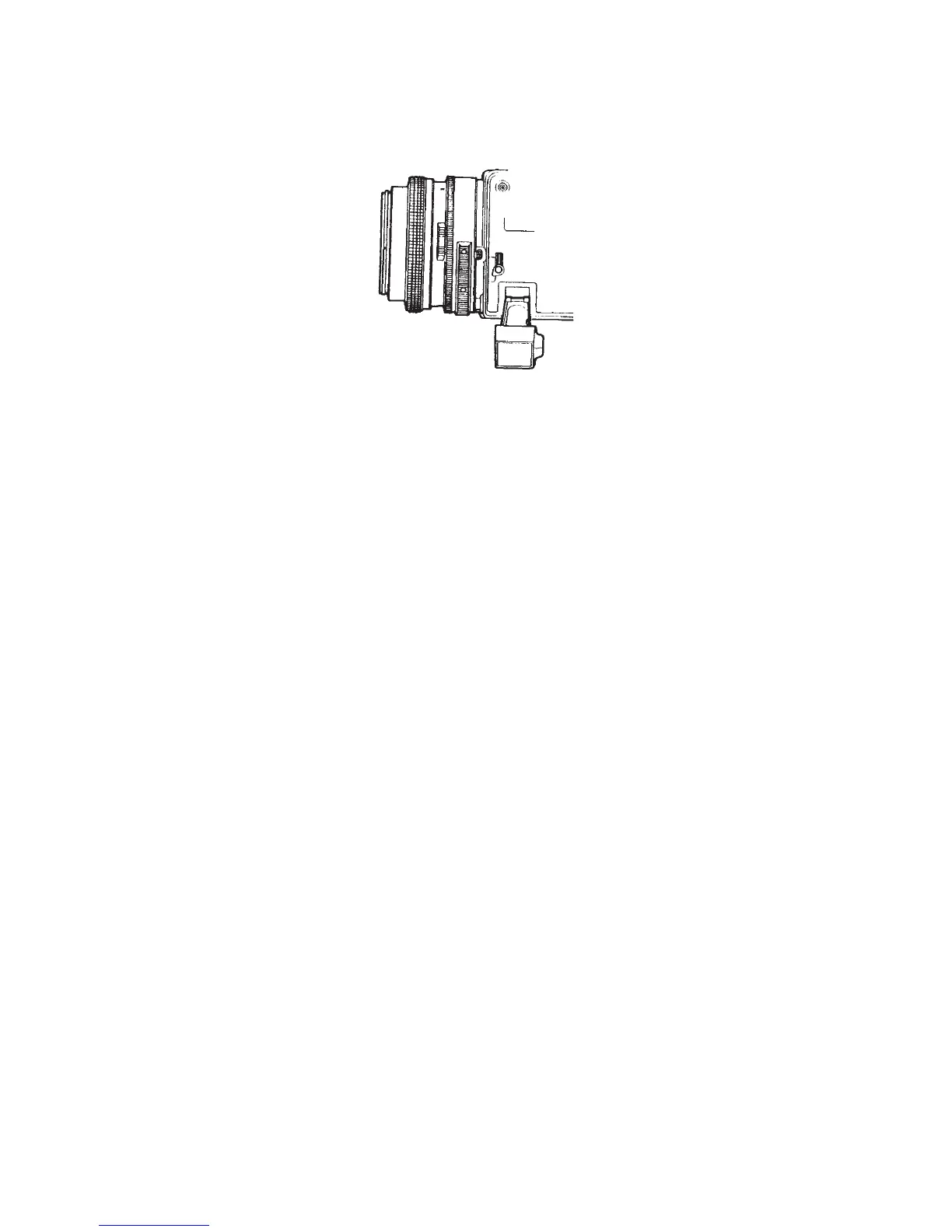Operating 503 and Other V System Cameras 173
Figure 9-14 Shutter speed lock on 2000/2003 models. Lock the shutter speed ring by pushing
the locking lever above the battery compartment downward so that the indicator points
toward L. The battery compartment on all focal plane shutter cameras is identical. Remove
and insert the battery compartment only with the camera in the ready position with the
shutter cocked and the mirror down.
On 2000FCM, 2000FCW, and 2003FCW models the focal plane shutter automatically
retracts when a fi lm magazine is removed. Recock the shutter before you attach the maga-
zine to avoid fogging fi lm. With a motor winder on the camera, the shutter is automatically
recocked when the fi lm magazine is re-attached. You can disconnect the shutter safeguard
feature by pushing the lever on the rear of the camera body to the side.
PRE-RELEASING THE CAMERAS
I recommend pre-releasing tripod-mounted cameras used at longer shutter speeds or with
longer focal length lenses to reduce the danger of mirror or shutter created vibrations. Pre-
releasing also eliminates the slight delay of about
1
/
25
second caused by the operating pro-
cedure in SLR camera models. In the pre-released mode, the shutter opens instantly like a
rangefi nder or twin lens refl ex camera. Pre-releasing serves no purpose and is impractical in
handheld photography. The pre-release procedure for the various V system models is shown
and described in Figures 9-15 to 9-18. Since Hasselblad cameras can be pre-released so easily,
I recommend doing so whenever practical with a mounted camera, even the lens shutter
models where the shutter operation is extremely smooth.
As pre-releasing lifts up the mirror, the image on the focusing screen disappears. If you
want to see the image again before you take the picture, turn the winding knob or crank with
the fi lm magazine removed or turn the winding crank with the center button depressed on
focal plane shutter models.
PRODUCING DOUBLE OR MULTIPLE EXPOSURES
Computer Produced Double and Multiple Exposures
Digital imaging has greatly reduced, or completely eliminated, the need for producing any type
of double or multiple exposures in the camera. The computer offers greater possibilities for

